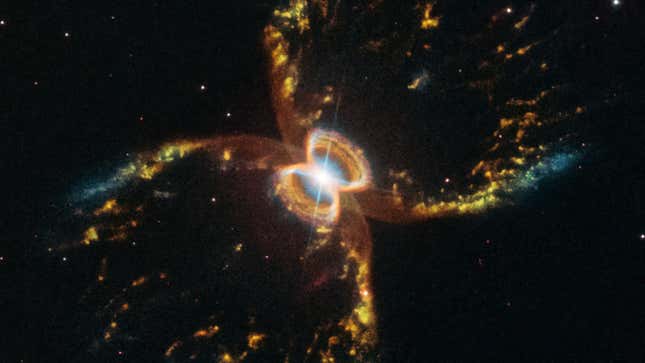
Hubble scientists like to honor the telescope’s birthday with an annual release of 4/20-worthy space porn, and this year’s pic is as stunning as ever. The image, in full below, offers an updated view of the Southern Crab Nebula.
So, what are you looking at? The image shows a pair of stars, a red giant and a white dwarf. The white dwarf accretes material from its partner and spews out even more matter, creating the structures seen here.
But the nebula has long been a source of mystery, according to a Hubble press release. It was initially described as a star until a 1989 observation revealed the outer pair of bubbles. Only after a 1999 Hubble observing run could astronomers resolve the inner structure, demonstrating that the process that created the outer bubbles seems to have happened again.

The past year has been difficult for Hubble. A broken gyroscope temporarily put it out of commission late last year. Scientists were ultimately able to fix the experiment through a series of maneuvers you might summarize (somewhat simply) as “wiggling it around.” But things are back in working order, for now, and the telescope is still creating the mind-blowing images it’s famous for.
And yes, as with all Hubble pictures, this is not what you would see with your own eyes; it’s been gussied up for public consumption. This image combines the light of four wavelengths emitted by excitations from four different elements. The blue areas represent 502-nanometer wavelengths of light from doubly ionized oxygen. Hydrogen alpha radiation (which would appear red to the human eye) appears here in green. Ionized nitrogen and ionized sulfur, which would be two different shades of red, are represented here as orange and red, respectively.
Happy early birthday, Hubble. It’s still incredible that after all these years, you’re still giving us such incredible images of space. We’re all the more excited for the images that the forthcoming James Webb Space Telescope might bring.